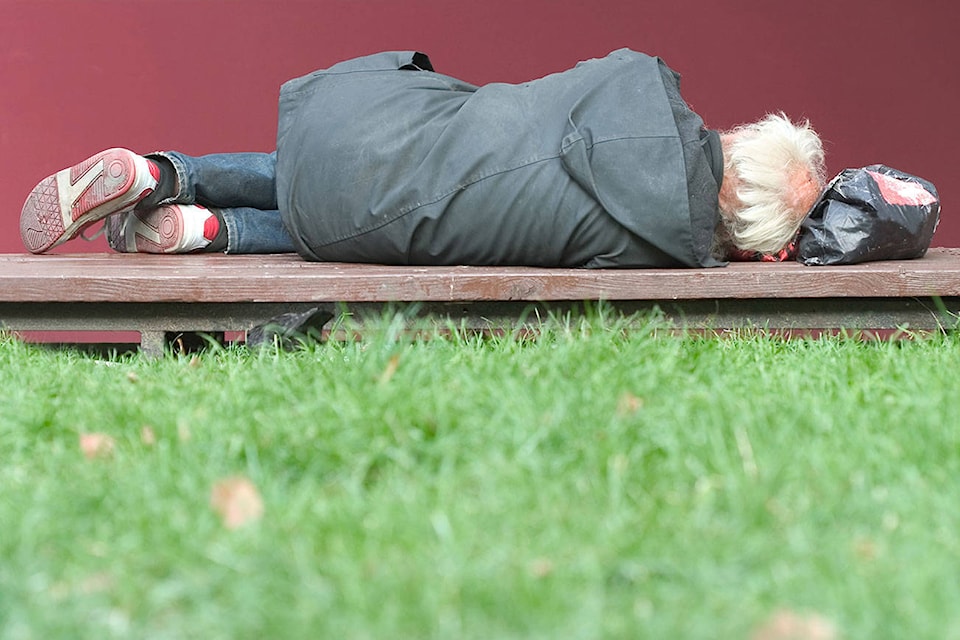Chilliwack saw the biggest spike in homelessness across the Fraser Valley, according to the 2017 Homeless Count final report.
The total number in the FVRD this time around was 606, up 75 per cent from the last homeless count in 2014, and of that number, Chilliwack had 221 who self-identified as homeless.
READ MORE: Chilliwack’s increase a concern
The FVRD board received the final report on the 2017 Homeless Count last week.
“Homelessness is one of the most pressing issues in our region and across the country,” said Jason Lum, chair of the FVRD.
No one agency can solve it on their own. The final report underlined “how important it is that we continue to work in collaboration with other levels of government and community agencies” to tackle housing issues, Lum said.
“We especially hope that this data will help to further inform the federal government and the National Housing Strategy.”
More than two-thirds of those counted were found to be “chronically homeless,” or 68 per cent reported living rough for at least six months.
Indigenous people were disproportionately represented — again.
That calls for a policy “rethink,” according to the report.
Although 35 per cent in the count said they were of aboriginal ancestry, overall Indigenous people only represent four per cent of the general population in the FVRD.
“That (disproportionate representation) wouldn’t surprise me at all,” said Grand Chief Doug Kelly, chair of the First Nations Health Council (FNHC). “The legacy of residential schools, racism, trauma and grief, have caused our citizens a lot of pain.”
First Nations are also over-represented in terms of the number of kids in care, as well as in the corrections system.
What is sorely needed is accessible services that are both trauma and grief informed, he said.
“The FNHC has partnered with the Government of Canada and the Province of B.C. in a bid to work together on the broader social determinants of health, and one of them is housing,” he said.
Although housing stability is “not on the current list of action items” being tackled by the FNHC, “I am sure it will be,” Kelly said.
Having spoken to some Chilliwack-area Sto:lo leaders, Grand Chief Kelly said increased homelessness is certainly on their radar.
“We know it’s a growing concern, and we need to work with all levels of government together to tackle it. We have work to do,” he said.
READ MORE: Shopping carts confiscated in DT Chilliwack
Not surprisingly 68 per cent of respondents reported substance use; 49 cent a medical condition; 46 per cent mental illness; and 29 per cent a disability.
“We know that those who live outside are frustrated,” added Lum. “We know that our communities are frustrated. And while many of us in the Fraser Valley are seeing progress in terms of increased shelter spaces, expanded outreach and support programs, we’re still a long way away from adequately addressing the problem.
“The final results from the 2017 survey underscore the urgency in working together to tackle this complicated issue,” said Lum.
READ MORE: Town Hall Meeting about Homelessness
@chwkjourno
jfeinberg@theprogress.com
Like us on Facebook and follow us on Twitter.
